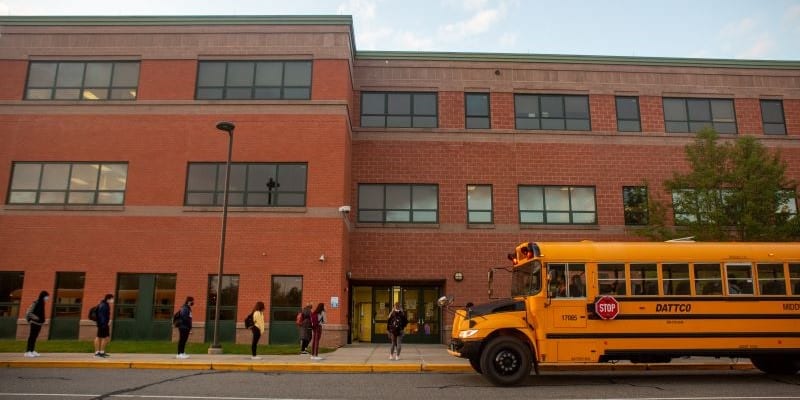Key Points
- Early learning ecosystems are only viable for families that have the time and means to coordinate multiple logistics on their own.
- For learning ecosystems to become viable mainstream alternatives to schooling, they’ll need to improve the interfaces they use to coordinate childcare, transportation, meal services, how they measure learning, and other basic functions of schools.
- Effective interfaces meet three key criteria: specifiability, verifiability, and predictability.
What would it look like if all students, regardless of their backgrounds, had access to internships, Outschool classes, community projects, travel, and other extracurriculars? What if experiences like these became the core of K-12 education, not just nice-to-have add-ons? Learning ecosystems that could enable students to learn and earn credentials through experiences like these present a compelling approach to learner-centered education.
Organizations like ReSchool, VLACS, and ImBlaze are pioneering the learning ecosystems frontier. Nonetheless, the current nascency of learning ecosystems forces families to make tradeoffs. Ecosystems make learning vastly more flexible and customizable to students’ needs and preferences than schools. But they fall short when it comes to a lot of basic functionality and reliability.
For example, hallmark functions of conventional schooling that require the sheer scale of a standalone school—such as school sports, band, theater, college-prep tracks, and school dances—may not be options for families that opt to cobble together learning experiences across their community. Additionally, families often have to figure out functions such as transportation, childcare, meals, counseling, etc. on their own.
In some cases, families manage to assemble a robust combination of options into a complete set of experiences that will meet their goals. But, if you’re a busy parent that doesn’t have a lot of time, money, or expertise to research options and coordinate logistics, you’ll probably opt for your child to attend a school where all these things will be taken care of.
That calculus leaves a lot of learners out, and likely privileges families with deeper pockets, stay-at-home parents, and those residing in well-connected communities. To try and even the equation for the sake of equity and access, some proponents believe the solution lies in more money and more choices for families. But money and choices alone won’t take ecosystems to scale: champions of ecosystems need to focus on shrinking the tradeoffs between customizability and reliability.
Fortunately, innovation theory signals a pathway to shrink these tradeoffs, thereby expanding learning ecosystems’ potential as an alternative to school-based education that is accessible for all students.
Modular interfaces: The essential linkages
Modularity Theory—a framework I introduced in an earlier post—illuminates what it takes for learning ecosystems to get better at functionality and reliability. In a non-integrated system—such as a learning ecosystem—the linkages that coordinate various parts are what Modularity Theory refers to as modular interfaces. A modular interface is one in which there are no unpredictable interdependencies between subsystems, people, teams, or organizations.
Systems that rely on modular interfaces can exchange information and direct synchronized activities with high reliability and minimal coordination effort. For example, rideshare apps create a modular interface between riders and drivers so they can coordinate rides with high reliability and little hassle. Similarly, USB is a modular interface that allows people to easily plug electronic devices from myriad companies together.
Modularity Theory identifies three conditions that must be met in order to provide reliable functionality through a system built on modular interfaces:
- Specifiability: The people or organizations working on both sides of an interface need to know what to specify—which attributes of the component are crucial to the operation of the system, and which are not.
- Verifiability: They must be able to measure those attributes so that they can verify that the specifications have been met.
- Predictability: There can’t be any poorly understood or unpredictable interdependencies across the interfaces. People using the system need to get what they expect when interacting with the system.
These three conditions—specifiability, verifiability, and predictability—constitute an effective modular interface. Unless all three conditions are met, the desired functionality and reliability of a given system will suffer. For example, a rideshare app would be pretty useless if drivers didn’t predictably show up when the app said they would.
There’s some consensus among pioneers that broader measures of student success should be part of a high-quality learning ecosystem. But just specifying those academic or social and emotional standards will prove insufficient. Families and providers will need assessments to verify mastery of those standards, and agreements among providers that their measure of mastery means the same thing across different contexts. Additionally, students need to move confidently from one experience to the next knowing that if measures of achievement say they’ve mastered prerequisites then they’re ready for more advanced learning opportunities.
Similarly, ecosystems are going to have to work on developing specifiable, verifiable, and predictable interfaces for functions such as transportation, meal services, and childcare. Companies such as HopSkipDrive and Care.com are helping to figure out these types of interfaces.
There are no shortcuts to effective modular interfaces
Learning ecosystem pioneers need to recognize that it’s going to take time to work out the modular interfaces to reliably deliver the basic functions most families get from schools. Designing interfaces that meet the three conditions above is a process, not a one-and-done event.
In my next post I’ll go into more detail on the pathways that could lead to reliable modular interfaces for learning ecosystems.
Earlier posts in this series can be found below:
Photo by Allison Shelley for EDUimages.



